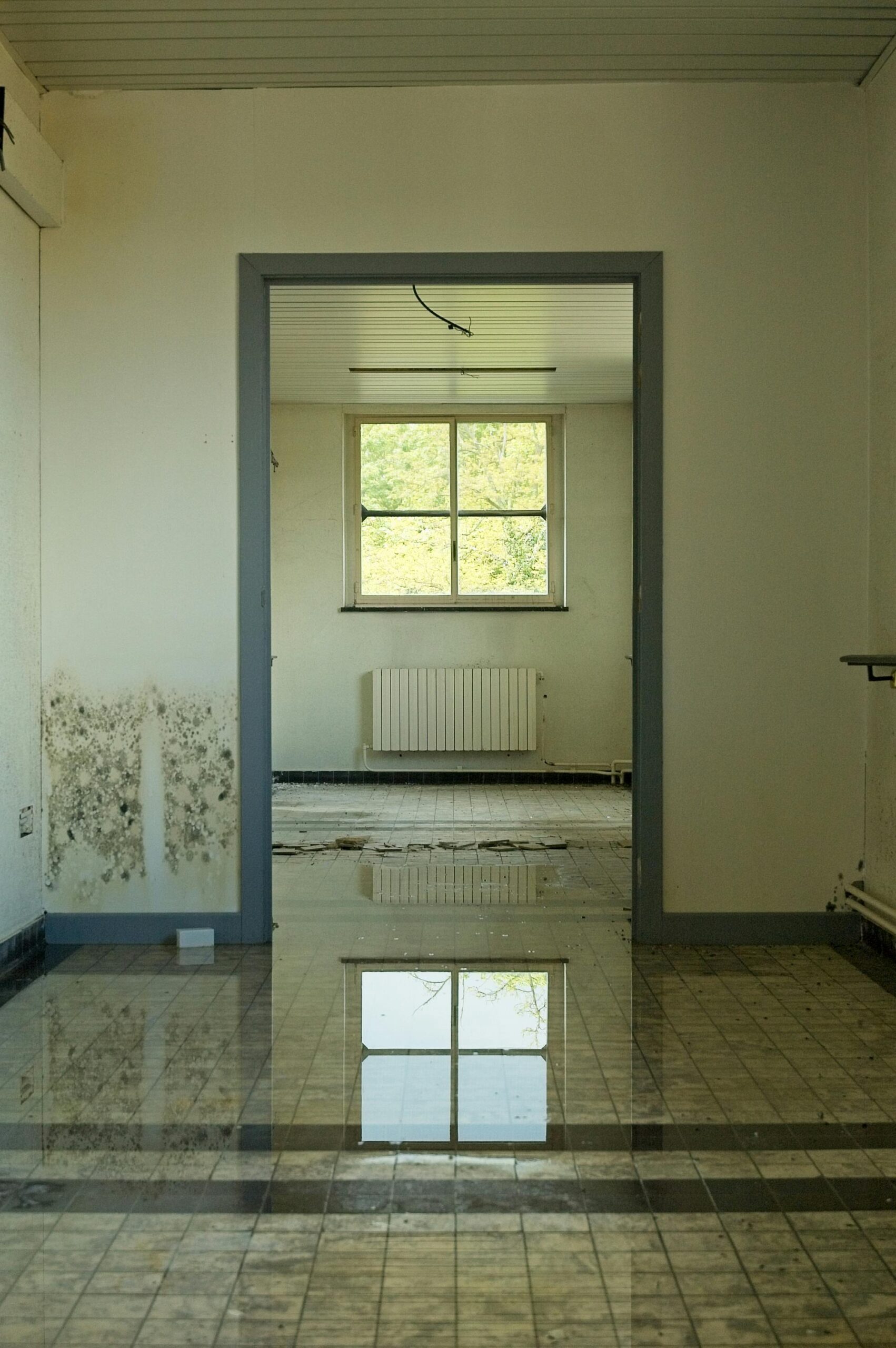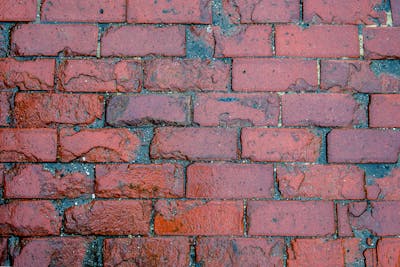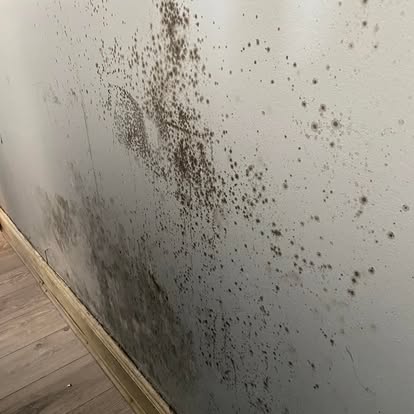
What To Do When A Cavity Wall Gets Damp: For Property Owners In Portsmouth
When a cavity wall gets damp, it can quickly lead to mould, peeling paint, musty smells, and even damage to your home’s structure. If you live in Portsmouth and notice damp patches on your walls or a cold, damp feeling inside, your cavity wall may be the problem. But what should you do when a cavity wall starts to get damp?
The first step is to understand what might be causing it. A cavity wall is made of two layers of brick with a small space in between. That space is meant to keep moisture out. But when water finds a way in, either through faulty insulation, blocked vents, or damaged bricks, the wall starts holding water instead of keeping it out.
Damp can creep in quietly. You may only notice a change in smell at first, or see small signs like bubbling paint or wallpaper starting to lift. If left alone, the damp spreads, softens plaster, ruins paintwork, and may even affect your health by encouraging mould spores and dust mites.
In Portsmouth, where older buildings are common and sea air can bring in extra moisture, cavity wall damp is a frequent issue. It affects homes of all sizes, and even newer buildings can suffer if the work wasn’t done right.
This article will guide you through everything you need to know. We’ll cover the main reasons why a cavity wall is getting damp, what signs to look out for, how bad it can get if ignored, and how to fix it properly. You’ll also find out when it’s time to call a specialist and what steps to take to stop it from happening again.
Why Does A Cavity Wall Get Damp In The First Place?
When a cavity wall gets damp, it’s often not a one-off problem. It usually means that something within the wall’s setup is letting water through or holding moisture where it shouldn’t. In Portsmouth homes, this issue is fairly common because of age, sea air, and even past repairs that were done the wrong way.
Poor or Wet Insulation: One of the biggest reasons for damp in cavity walls is insulation that has gone wrong. If your home has cavity wall insulation and it gets wet, it stops working properly. Instead of keeping heat in and moisture out, it starts holding onto water. This damp material then transfers moisture across to your inside walls. This is very common in older houses where foam or mineral wool insulation was added years ago but never checked again.
Blocked Air Vents or Weep Holes: Cavity walls need to breathe. Tiny gaps like wall vents or weep holes help air flow through and keep the space between bricks dry. If these vents are blocked by dirt, paint or cement, moisture stays trapped. It can then soak through the wall and into your home. This problem is often missed because people don’t even realise the vents are meant to stay open.
Bridging the Cavity Gap: The space between the two walls should be clear. But sometimes, leftover building rubble or insulation falls into the cavity and forms a bridge. This bridge lets water cross from the outer wall to the inner wall. Even something simple like a wall tie set too deep or poorly fitted insulation can cause this problem.
Coastal Weather and Wind-Driven Rain: Living in Portsmouth means facing strong sea winds and heavy rain. When rain hits the walls with force, water can seep through cracks or worn bricks. Over time, it gets into the cavity, especially if the outer wall isn’t sealed properly. Once water gets into that space, it has nowhere to go but inward.
Failed Damp Proof Course: Older homes may have a damp proof course (DPC) that has broken down. The DPC is a thin layer inside the wall that stops rising moisture from reaching higher areas. When it fails, dampness can rise and start affecting the cavity area.
To stop a cavity wall from getting damp, you need to know where the moisture is coming from. Once that’s clear, the fix becomes easier and far more effective.

What Are The Signs Your Cavity Wall Has Damp?
Knowing the early signs that your cavity wall has damp can save you a lot of time, money, and stress. These signs usually start small but get worse if ignored. If you live in Portsmouth and notice any of the issues below, it could mean your cavity wall is holding moisture.
Wet or discoloured patches on walls: One of the first things people see is a damp patch on an inside wall. This might look like a darker area or even have a brown stain. It’s often near the skirting board, around windows, or in the corners of rooms. These marks tend to feel damp to the touch and may grow over time.
Wallpaper or paint starting to peel: If the wall behind your wallpaper gets damp, the glue holding it up begins to break down. The same goes for paint. You might see bubbles forming in the paint or patches where it begins to flake off. This usually happens in areas where the moisture is slowly building from behind the wall.
Cold or clammy feeling indoors: A room affected by damp often feels cooler than the rest of the house. Even if the heating is on, the wall holds moisture, which makes the air in the room feel heavy or damp. This can also lead to condensation forming more often on windows and mirrors.
Mould growing on walls or ceilings: Black spots of mould, especially in the corners or near the ceiling, are a clear sign of damp. Mould loves moist conditions, and a damp cavity wall provides the perfect place for it to grow. The smell of mould is musty and sharp, and it usually doesn’t go away even with regular cleaning.
Musty smell in one part of the house: Sometimes the smell comes before the sight. If you keep noticing a strange, earthy smell in one room or near a particular wall, it’s worth checking for hidden signs of damp. Smell is a good early warning, especially if nothing else in the room explains it.
Rust or damage near electrical fittings: Damp inside walls can reach metal parts like nails, screws, or even electrical boxes. If you notice rust stains or flickering sockets, moisture may be getting in from behind.
Spotting these signs early can help you fix the problem before it spreads or causes serious damage.
How Long Before Damp In A Cavity Wall Becomes Serious?
When a cavity wall gets damp, many people hope it will dry out on its own. Sadly, that’s not how it works. The longer you leave damp in a cavity wall, the more serious the damage becomes. It can go from a small problem to a major repair job in just a few months, especially with the wet weather we get in Portsmouth.
The first few weeks: hidden trouble begins
At the start, damp may not show on the surface. It could just be trapped in the cavity or soaked into the insulation. This stage is often missed because there’s no clear sign yet. But even at this point, the moisture is softening plaster, weakening paint and creating the perfect spot for mould to grow.
After one to three months: visible signs appear
If damp has been there for a month or two, you’ll likely start to notice discoloured patches, flaking paint or a strange musty smell. These are clear signs that the moisture is moving from the cavity into the inner wall. If your home has furniture against the wall, the problem might stay hidden for longer, making it worse.
After three to six months: mould and health risks
As the moisture keeps building, mould spores can appear. These often start as small black dots but can spread quickly. People with asthma or breathing problems may feel worse in these rooms. The mould can also ruin wallpaper, carpets and even clothes stored nearby.
Six months and beyond: lasting structural damage
If a cavity wall stays damp for more than six months, you’re looking at long-term damage. Timber behind the walls may rot, plaster may crumble, and you might even need to strip the wall down to treat it properly. At this stage, the fix is no longer simple or cheap.
Why acting fast makes all the difference
Damp spreads quietly and doesn’t stop on its own. The sooner you find it and fix it, the less damage it causes. A trained damp specialist can often find the source quickly using tools that scan behind walls, so the problem doesn’t get worse.
In Portsmouth, where wet and windy weather is normal, early action is the best way to avoid a serious issue from forming.

Best Ways To Fix It When A Cavity Wall Gets Damp In Portsmouth Homes
When a cavity wall gets really damp in Portsmouth homes, it’s important to deal with the cause, not just the symptoms. Simply painting over patches or wiping mould won’t stop the problem from coming back. Here are the most effective ways to fix the issue and stop it for good.
Check the source of the damp first
The first step is always finding where the moisture is coming from. A damp survey can help with this. Professionals use tools like moisture meters and thermal cameras to scan behind the wall. They’ll tell you if the issue is due to water coming in, moisture rising, or something trapped in the cavity.
Remove or dry out wet insulation
If your cavity wall has insulation, and it’s wet, it will need to be removed. Wet insulation acts like a sponge and holds moisture inside the wall. Once it’s out, the cavity can be left to dry properly. In some cases, a new, water-resistant insulation can be installed after repairs are done.
Clear out the cavity space
Sometimes the gap between the inner and outer wall is filled with rubbish from building work or collapsed insulation. This can cause water to bridge across. A full cavity clean-out may be needed to remove these blockages and restore proper airflow.
Repair outer wall cracks and pointing
If rainwater is getting in through small cracks or damaged brickwork, this must be repaired. Repointing the bricks and sealing the outer wall can help stop water from entering. This is especially important in older Portsmouth homes where bricks have worn down over time.
Unblock vents and weep holes
Wall vents and weep holes are small but important. If they’re blocked, the cavity can’t breathe and moisture stays trapped. These should be checked and cleared to let air flow properly. Sometimes special covers can be fitted to stop pests getting in while keeping airflow open.
Apply a breathable water repellent
For extra protection, a clear, breathable coating can be applied to the outer brickwork. This repels water from rain but still allows moisture inside the wall to escape. It’s a great way to protect Portsmouth homes from coastal rain.
Once the problem is fixed, it’s a good idea to check your walls regularly, especially in autumn and winter.
Let Us Help You Deal With Cavity Wall Damp Properly
If your cavity wall gets damp, the worst thing you can do is ignore it and hope it dries on its own. We’ve seen first-hand how quickly a small issue can spread through a home and cause damage that’s not only costly to fix but also stressful to live with. The good news is, you don’t have to deal with it alone.
At Ventil8ed, we help property owners in Portsmouth find the cause of their damp problems and fix them the right way. We don’t offer guesswork or quick cover-ups. We use the right tools and a simple, step-by-step method to stop the damp, dry out your walls, and stop it from coming back.
Whether it’s wet insulation, blocked air vents, or old bricks letting in sea moisture, we’ll find out what’s going on and talk you through the best way to solve it. We keep everything simple and clear, and you’ll always know what’s being done and why.
You shouldn’t have to live in a home that feels damp, smells musty or has mould on the walls. And you definitely shouldn’t have to pay for big repairs later when the fix can be sorted now.
So if your cavity wall gets damp, call us! Let us come take a look and get your home back to feeling warm, dry and comfortable again. It costs nothing to ask, and we are always happy to help.
Call now on 07762 214344 or reach out through the website to book a visit.


